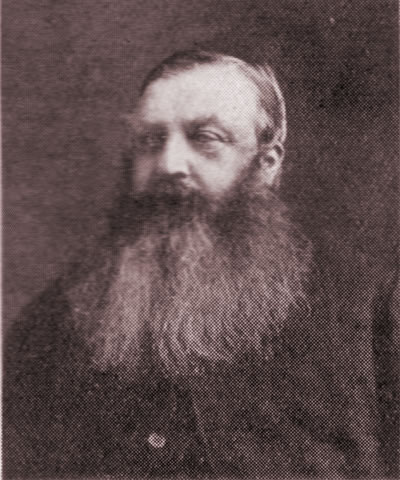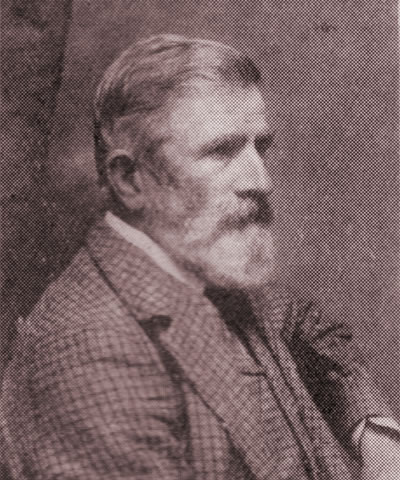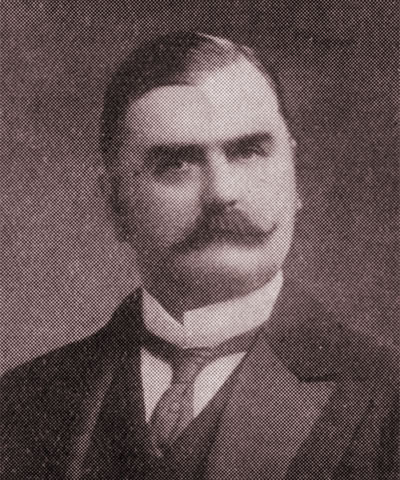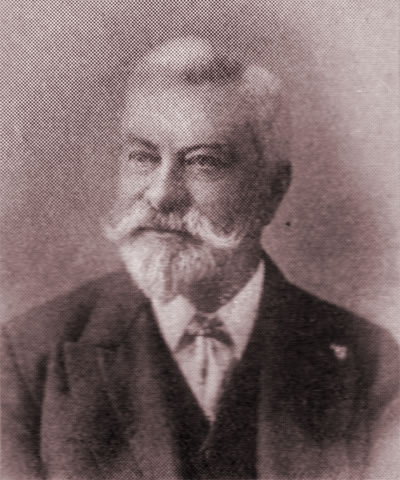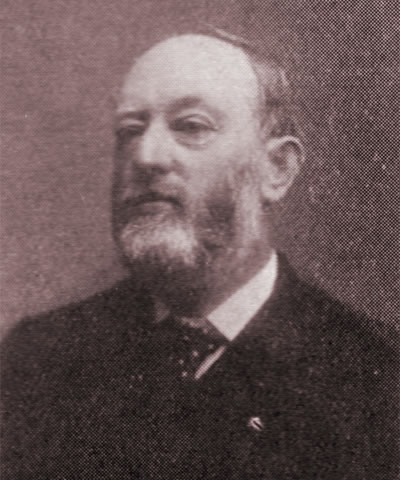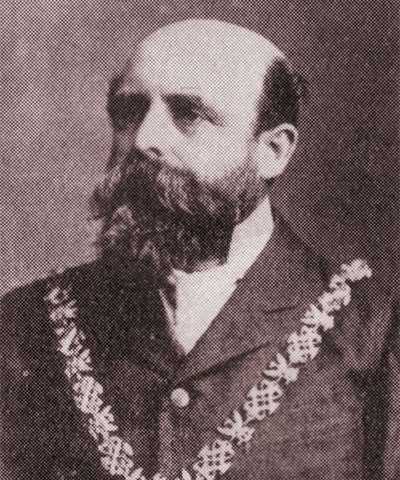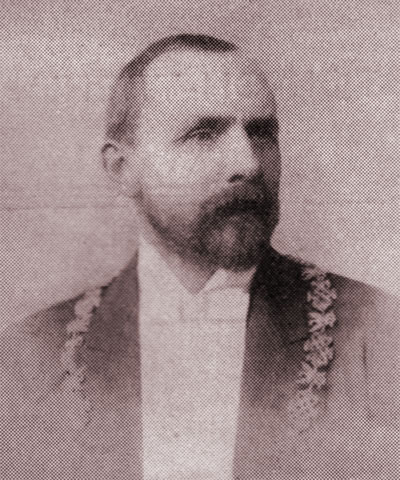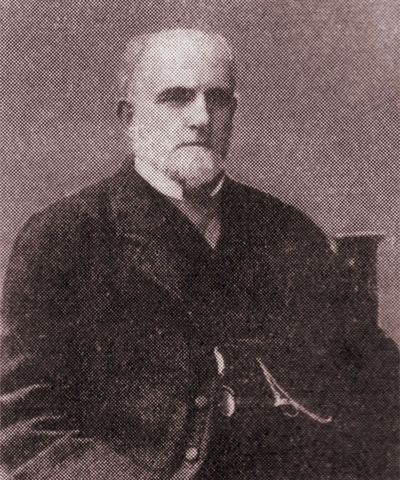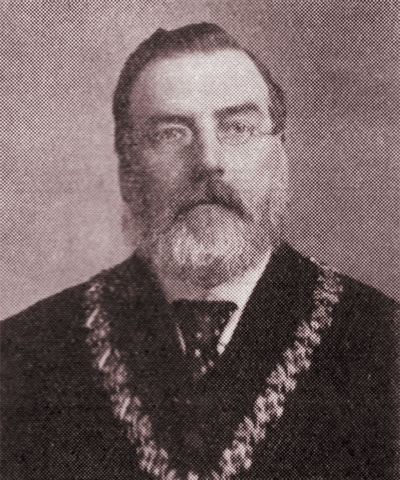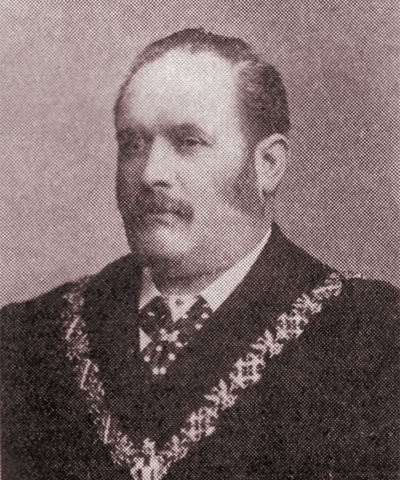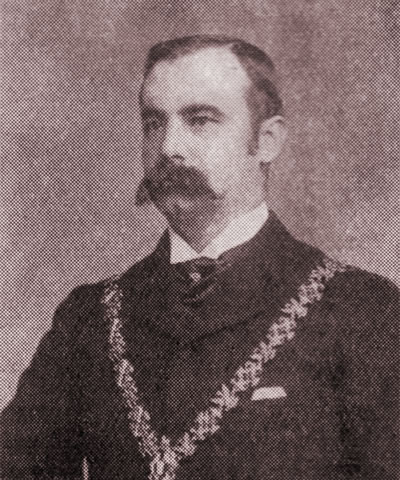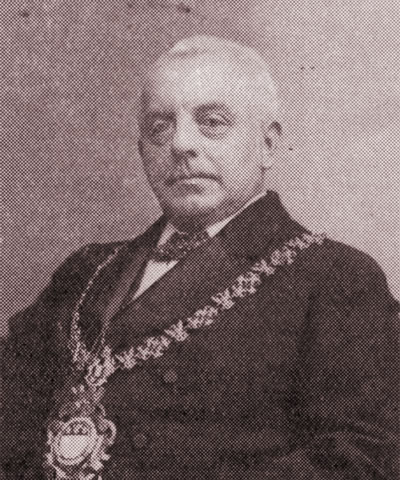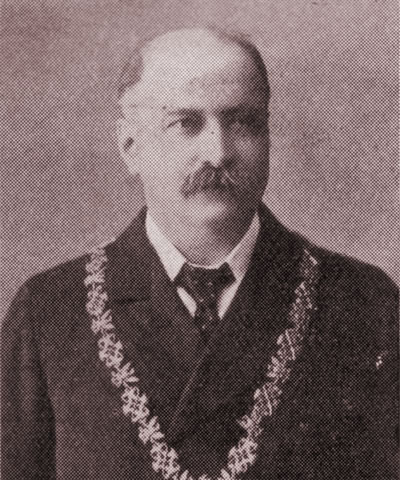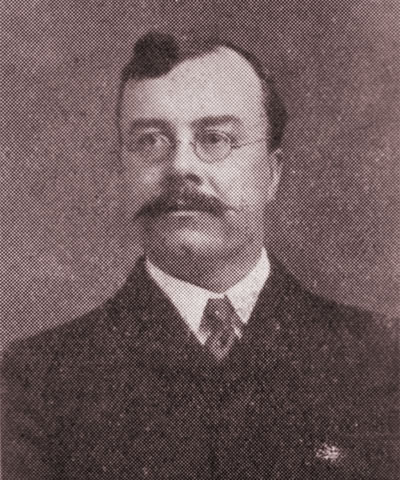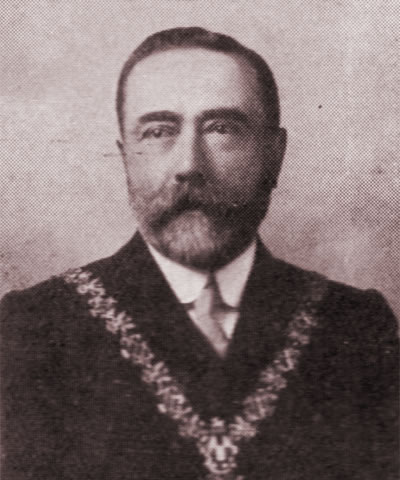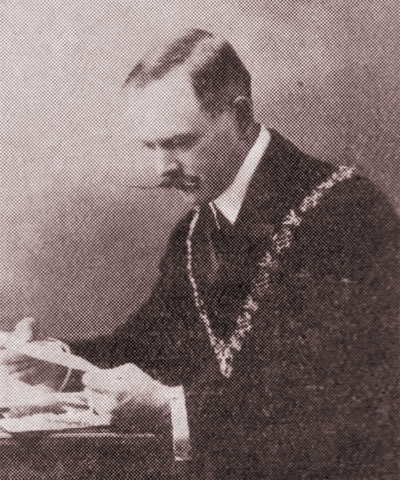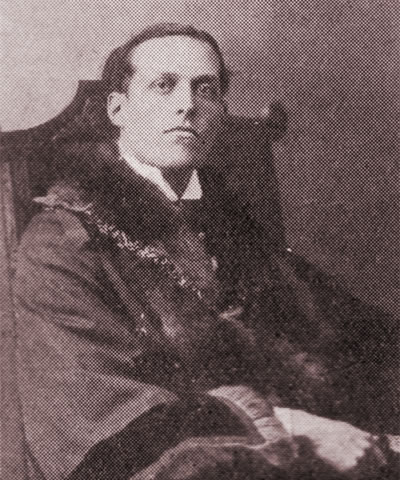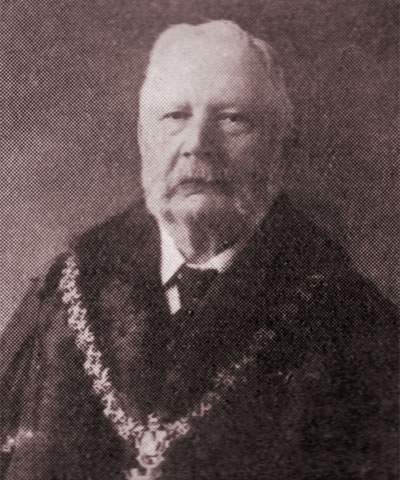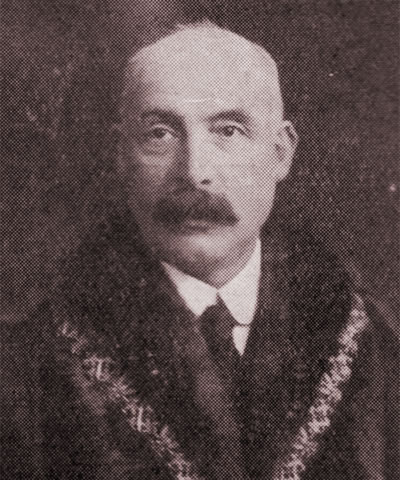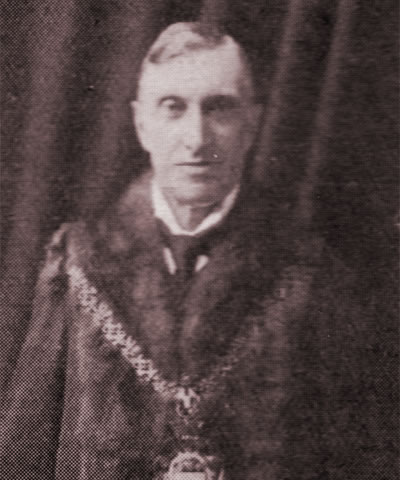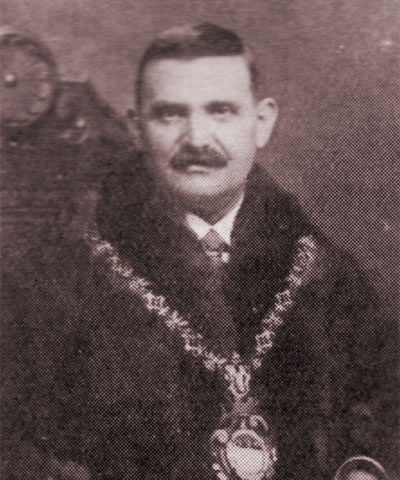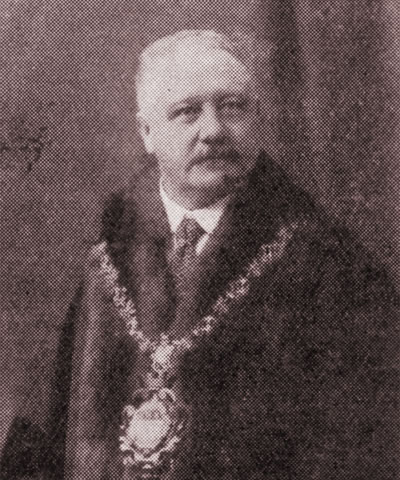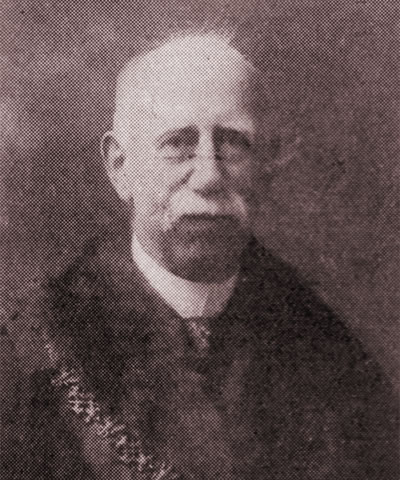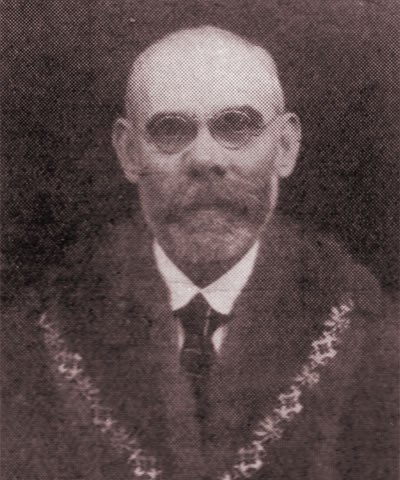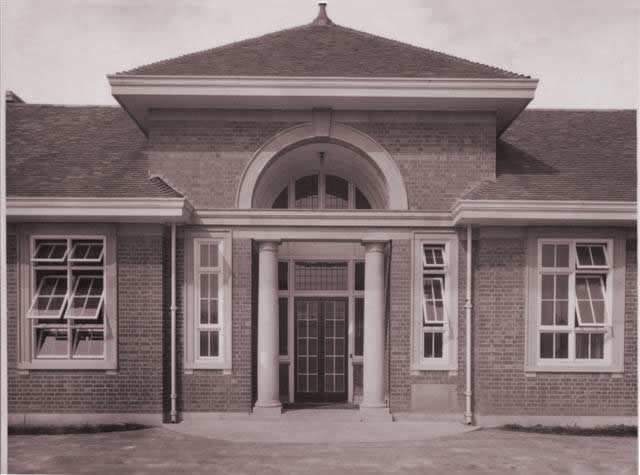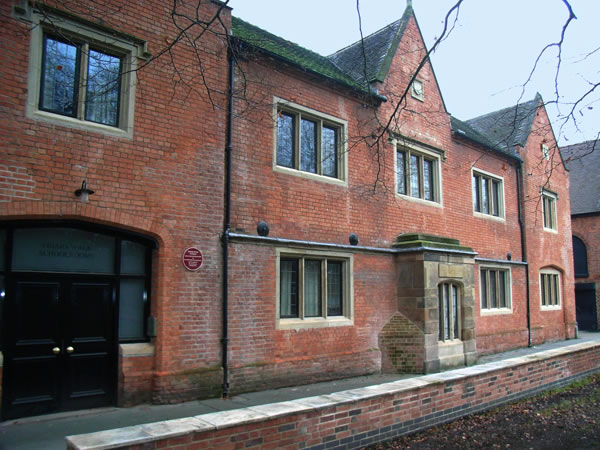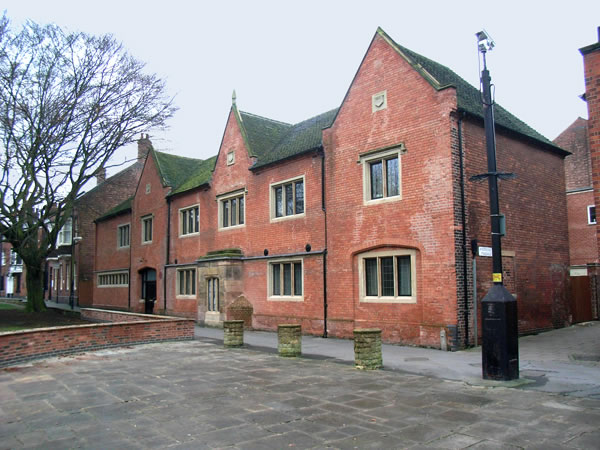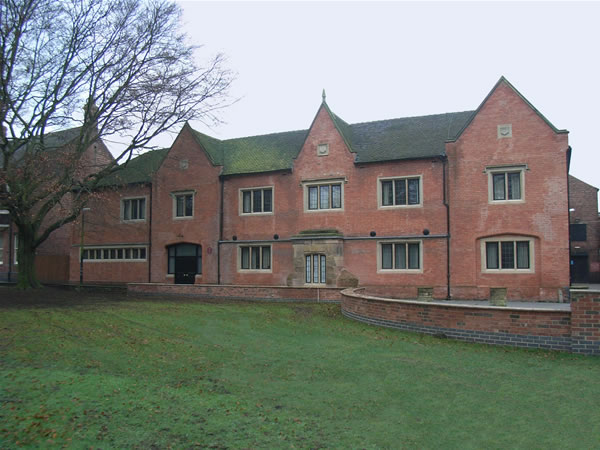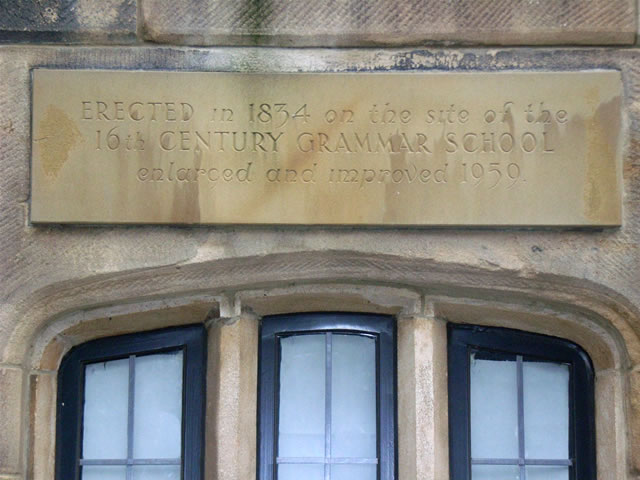In the Middle Ages Burton was governed through a manor court which had jurisdiction over the abbey’s tenants in Burton itself and in the outlying settlements of Branston, Horninglow, Stapenhill, Stretton, and Winshill, all of which were tithings with their own frankpledges. In addition, there was a separate manorial court for the borough. When local government fell increasingly into the hands of parish officers from the late 16th century, the manorial tithings came to be styled townships, with Burton tithing (the area of the original settlement lying outside the borough) being renamed Burton Extra and the borough becoming Burton township.
From the earlier 16th century the borough benefited from a charitable endowment called the town lands, whose income supported a variey of public works and continued to do so even after improvement commissioners were established for the town in 1779. Following the town’s physical expansion in the earlier 19th century the commissioners’ powers were extended in 1853 to cover parts of Burton Extra and Horninglow, and when the commissioners were replaced by elected councillors in 1878 their area of competence was further extended to include Horninglow village and parts of Stapenhill and Winshill townships. Branston and Stretton remained separate.
The municipal borough created in 1878 became a county borough in 1901 and remained so until 1974 when it was reabsorbed into Staffordshire county council. Along with Branston and Stretton, the former county borough forms part of a district called East Staffordshire borough council, whose main offices are in Burton town hall.
MANORIAL GOVERNMENT
The abbot of Burton had a court by 1135, with powers of jurisdiction which included infangthief (the right to try thieves). Styled a hall moot (halimote) in the later 12th century, the court was attended by all the abbot’s tenants and not only those of Burton. The number of attenders is possibly indicated by the number of dishes of food (disci) which Abbot Nicholas (1187-97) agreed to provide at his own costs, and not as a charge on the kitchener: namely, 100 at Easter and 100 at Michaelmas, the dates presumably being those when the court met. Later there were both great and small courts for Burton manor alone, to which presentments were made by its constituent tithings of Burton upon Trent, Branston, Horninglow, Stapenhill, Stretton, and Winshill. Burton tithing presumably excluded the borough created in the 12th century, which probably had its own court, although not recorded until the earlier 14th century.
After Sir William Paget acquired the manor in 1546, Burton tithing was renamed Burton Extra, to distinguish it from the borough, and that name was also applied to the manor court which was usually called Burton Extra with members. Manorial government declined from the later 16th century as parochial officers became more active, and in 1726 it was to Burton vestry that a man who had been elected as constable at the manor court paid a fine because he was leaving the town and wanted to be relieved of the office. The feoffees of the Burton town lands, a trust established in the earlier 16th century, were also involved in town government, and improvement commissioners were first appointed in 1779.
Jurisdiction
The Crown acknowledged c. 1255 that the abbot had view of frankpledge at Burton, including Branston, Horninglow, and Stretton, for which right he paid the sheriff of Staffordshire 1 mark (13s. 4d.). The abbot was then fined for using the court since the earlier 1240s to deal illegally with cases of assault and of breaches of the assize of bread and ale. In 1293 the abbot claimed a view in the liberty of Burton, together with assize of bread and ale, and his jurisdiction extended into the Derbyshire part of the manor: in 1330 it was stated that the abbot had failed to exercise his right of infangthief at Stapenhill, that there was no gallows there, and that thieves had had to be tried at the hundred court. The right was confirmed for a payment.
The abbot’s powers were extended in 1468 when the king granted him the authority to return writs previously dealt with by the sheriff; the abbot was then to act as justice of the peace and the bailiff as coroner. Those powers were confirmed in 1527 and passed to the Paget family when it acquired the manor in 1546. The inhabitants of Burton manor were consequently exempt from serving on county juries, until the privilege was withdrawn in 1876. At the end of the 18th century the coronership was held by the deputy steward (later styled the high bailiff) of the manor. From 1872 a county coroner was employed as his deputy but from 1900 he was paid directly by the county council.
The abbot’s spiritual jurisdiction in the ecclesiastical peculiar of Burton included the proof of wills, and after the Dissolution the Paget family as lords of the manor retained probate powers until 1858.
Fees
A 20s. annual fee called the sheriff’s aid which the abbey was paying in 1535 may have been a survival of the mid 13th-century payment to the sheriff for the abbot’s right to hold views of frankpledge at Burton. The abbey also paid a fee called palfrey money, which Sir William Paget’s agents in 1546 believed was due to the bailiff of Offlow hundred; it had been 4s. a year but in 1546 was 6s. 8d. Only 9d. a year was in fact paid after Paget acquired the manor, and in 1585 the recipient was the sheriff of Staffordshire. The money was probably paid in lieu of the sheriff’s right to free fodder for his horses when visiting Burton on official business.
Manor Courts
There was a three-weekly small court for the manor by the earlier 13th century. By 1284 and in the earlier 14th century it was held on Saturdays, also the day for the twice-yearly great court or view of frankpledge in the earlier 14th century. There were four frankpledges each for the tithings of Burton, Branston, Horninglow, and Stretton and two each for Stapenhill and Winshill. The jury of twelve men sworn at the great courts in the early 14th century were evidently free men, and by 1383 there was also a sworn jury of fifteen neifs.
After 1398 there are no surviving court records until the earlier 16th century, when there are records of views and small courts. By 1565 the view was held in two parts: one for the tithings of Burton Extra (the non-borough part of Burton), Stapenhill, and Winshill, and one for those of Branston, Horninglow (and Wetmore), and Stretton. There were by then two frankpledges for each tithing. By 1583 Horninglow tithing had three frankpledges but the others still only two, and that arrangement remained in force in 1640, the date of the last surviving record of a view.
Court business declined from the mid 17th century as copyhold tenure was replaced by leasehold, and the courts probably became social affairs. Two great courts or leets, evidently for the combined manor and borough, were still held in 1773 and possibly in the early 19th century. By 1834 there was only a single leet, held in October. It was apparently still functioning in the early 1850s, but probably ceased after the improvement commissioners extended their powers in 1853.
Manorial Officers
Stewards The courts in the 12th and early 13th century were presumably held before the abbot’s steward, the officer responsible for supervising all the abbey estates. In the 1220s John of Stapenhill was described as steward of Burton, possibly an indication that he administered only Burton manor, and stewards later in the 13th century are also styled of Burton. Apart from occurrences in 1349 and the 1360s, there are no further references to a steward until just before the dissolution of the abbey in 1535: George Hastings, earl of Huntingdon, then held what was presumably the honorific office of chief steward of Burton, for which he was paid £6 13s. 4d. a year. The steward in 1585 was Ralph Adderley.
From 1604 until 1632 the steward was John Chetwynd, possibly of Rugeley, and from 1633 to 1641 Richard Watson.
By the later 18th century it was usual for the officer, by then known as high steward, to be a barrister. John St. John was appointed in 1770, in succession to William Ashurst, and was still steward in 1775. The office was held in 1804 by R. G. Clarke, and later by John Lane of King’s Bromley (d. 1824), Nathaniel Clarke (d. 1833), and, finally, Joseph Richardson (d. 1851).
By the earlier 1260s the steward had a clerk, whose duties were probably the same as those of the man called the keeper of the abbot’s courts in 1514. At the dissolution of Burton college in 1545, the clerkship was held by Nicholas Burwey, also described as understeward, at an annual fee of 13s. 4d. He kept his office under the Pagets, and his successor in 1585 received the same fee.
Deputy Stewards
As manorial business declined the duty of presiding over the court was undertaken by a Burton lawyer, styled the deputy steward by the later 18th century. When Abraham Hoskins died in office in 1804, he was succeeded firstly by Daniel Dalrymple, a lawyer and banker (d. 1805), and then by Hoskins’s junior partner and son-in-law John Dickenson Fowler. Fowler, who was knighted in 1815 when he presented a loyal address from the borough to the Prince Regent at Lichfield, died in 1839 and was succeeded by his law partner John Richardson, who was usually styled high bailiff. Richardson died in 1877 and was succeeded by the marquess of Anglesey’s chief agent John Darling (d. 1908), who remained in office until his retirement in 1889. The post then seems to have fallen into abeyance.
Hallswains
The office of hallswain recorded in the early 12th century possibly involved attendance at the manor court in some administrative capacity. By the 14th century the hallswain made presentments of offences which had been overlooked by the frankpledges. There was a hallswain for Stretton in 1395; each tithing may by then had such an officer, or the title may merely have been used on that occasion as an alternative for reeve.
Other Officers Manorial officers appointed to collect rents and to regulate the open fields and access to common land are treated elsewhere in this article.
MANORIAL BOROUGH GOVERNMENT
A borough was established in the 12th century, although borough status was not recorded until 1203, shortly after King John granted Abbot William Melburne the right to extend the borough in Horninglow Street. The burgesses were to hold by burgage tenure at 12d. a year and to enjoy the customs of free burgesses in any neighbouring borough. When Abbot Nicholas of Wallingford (1216-22) granted a charter confirming burgage tenure, it was stated that the Burton burgesses had chosen (elegerant) the liberties and customs of the burgesses of Lichfield.
The borough was represented at an enquiry by 12 burgesses in 1221 when neighbouring towns challenged its right to hold a market and fair. By the earlier 15th century there was possibly a council of leading inhabitants: in 1441 a local knight, two merchants, the town bailiff, and nine burgesses, in that order, appointed the bridge keeper. When a later bridge keeper was appointed in 1493, he was chosen by the abbot and senior manorial officers, together with 18 ‘goodmen’ (probi homines). There was a religious guild certainly by the later 15th century, but it seems not to have acquired any powers of government in the borough. In the earlier 16th century a common fund was established for the town, vested in feoffees and administered by wardens.
Borough Courts
A borough court existed in 1333 and 1394, but no records for it survive before September 1565, when a view of frankpledge was held at which a 16-man jury was empanelled and eight tithingmen were elected. The jury, known conventionally as the Twelve, comprised both burgesses and non-burgesses, the former numbering five and the latter 10 in 1634. The tithingmen, who probably represented wards in the town and who were styled dozeners by 1624, still numbered eight in 1640, the last year for which borough court records survive.
Although borough court business appears to have been subsumed into that of the manor court by the 18th century, the dozeners survived and in 1733 they were issued with eight new staves of office. Dozeners were still being appointed in the early 1850s, and some of their staves survived in Burton museum in the early 1940s.
Borough Officers:
Bailiffs
Two bailiffs were recorded in the late 13th century, but from the early 14th century there was normally only a single bailiff, usually holding office for two or more years at a time.
The bailiff in 1535 was Walter Charnels, who received as his allowance all the profits of the borough court (given as £3 6s. 8d.). When Sir William Paget acquired the manor in 1546, he continued to pay Charnels’ fee as an annuity but appointed a working bailiff who accounted for both the borough and Burton Extra.
Constables
The borough had two constables in 1307, and pairs of constables are found witnessing charters in the later 15th century. The two constables in office in 1493 were possibly assisted by three men styled valets of the coroner. In the later 16th and earlier 17th century the election of two constables was occasionally recorded at the borough view of frankpledge, but by then they had become more closely associated with the parish officers. In the early 18th century the constables attended meetings of the vestry for Burton township, although they were still elected at the manor court.
Bellman
The duties of the bellman given in bye-laws made by the borough court in 1574 were to ring the market bell and to clean the market place.
PARISH GOVERNMENT
By the early 17th century the borough and manorial tithings (Burton Extra, Branston, Horninglow, and Stretton) also corresponded to divisions within the parish, first called constablewicks and later townships. Stapenhill and Winshill also probably formed separate townships from the 17th century. Each township had its own parish officers and each became a civil parish in the later 19th century. Even after Burton, Burton Extra, and parts of Horninglow, Stapenhill, and Winshill were taken into Burton municipal borough in 1878 they continued as civil parishes, but in 1904 they were incorporated into a new civil parish called Burton-upon-Trent, co-terminous with the county borough created in 1901. That part of Horninglow which was not included in the municipal borough, and which was renamed Outwoods in 1894, remains a separate civil parish, as do Branston and Stretton.
Vestries
A vestry of about six men dealt with the routine affairs of Burton township, and met monthly from at least 1701. In 1710 meetings were held in the north transept of the parish church. In 1805 the vestry comprised a committee of about 12 men. The number was increased in 1824 to 24 men, who served in groups of six for each quarter of the year. Their main activity was the administration of poor relief. The committee was replaced in 1821 by a select vestry of 20 men, who retained the practice of serving by quarter. From 1830 a new arrangement required fortnightly meetings of half the members. The creation of a poor-law union in 1837 greatly reduced the business of the select vestry.
The other townships had their own vestries, although that for Burton Extra is not recorded before 1846 when ratepayers there met in various inns to choose parish constables and overseers. The Burton and Burton Extra vestries continued to meet until 1904, when their last responsibility for parish government passed to Burton corporation, which provided officers for the new civil parish of Burton upon Trent.
Parish Officers
Churchwardens There were two churchwardens for the parish in 1553. By the later 1650s someone from Horninglow was a churchwarden every third year, and it seems that by then the ‘country’ townships provided two wardens who served alongside two for the town, as was certainly the case by 1687. By the earlier 18th century the town wardens were chosen by the Burton vestry.
Clerks A parish clerk was paid 10s. a year by Burton college in 1544. A salary of 40s. charged on Sir William Paget when he acquired the manor in 1546 was still being paid out of manorial revenue in the earlier 1620s. In the late 18th century there were two clerks, one for the town and one for the country townships.
Parochial Constables
By the later 16th century the manorial constables for Burton borough had become parish officers. Parochial constables continued to be appointed after the vestry began to employ a salaried policeman in 1819: under an Act of 1842 overseers of the poor were required to give J.P.s the names of men nominated to serve as parochial constables and that practice was observed at Burton from at least 1845 until 1872.
There were constables for the other townships in Burton parish, including Burton Extra, by the early 17th century. As at Burton, unpaid parochial constables were nominated by Burton Extra ratepayers from at least 1846 until 1872.
Highway Surveyors Surveyors of the highways for Burton township are recorded only occasionally in the later 17th and early 18th centuries, and they may not have been regular appointments: responsibility for paving the streets fell mainly on the constables. The other townships evidently had their own highway surveyors in the 18th century. Burton vestry appointed surveyors from 1836 under an Act of 1835, and continued to do so until 1853, when responsibility passed to the improvement commissioners.
Poor Relief
Bequests were made to a poor man’s chest (or box) in the parish church in the 1550s and still in 1582, and weekly collections may have been taken as required by parliament in 1551. Two overseers for the poor recorded in 1606 were probably for Burton township, which certainly had two in 1701. The vestry continued to appoint two overseers until 1903, but on the creation of the new parish of Burton-upon-Trent in 1904 their appointment passed to Burton corporation. The ratepayers of Burton Extra similarly appointed two overseers from at least 1846 until 1903. Aldermen and councillors of the municipal (later county) borough continued to meet as the corporate overseers until 1927.
A bye-law against receiving strangers passed by the borough court in 1574 was presumably directed chiefly against poor vagrants. The poor in Burton township were being badged by 1701, and only those who attended church regularly and sat in special seats were to receive parish relief.
Expenditure The amount of money spent annually on poor relief in Burton township rose steadily from £76 in 1700 to £119 in 1719 and then more steeply, reaching £163 in 1723 and £194 in 1725. It was evidently the sudden increase in expenditure and the impetus given by the Poor Relief Act of 1722 that triggered the decision in 1728 to convert a barn on the west side of Anderstaff Lane (later Wetmore Road) into a workhouse and in 1730 to the appointment, as a temporary measure, of a salaried assistant to the overseers. Expenditure duly fell to £128 by 1731 and £88 by 1733. By 1776, however, it had risen to £294, and in the mid 1780s it averaged £525. A married couple were appointed as workhouse governor and governess in 1782.
By 1803 annual expenditure on the poor was £1,526, of which £790 was spent on out-relief (60 people permanently and 105 occasionally) and £690 on maintaining 65 inmates in the workhouse. A complaint made in 1805 by the vicar, churchwardens, and vestry about the mismanagement of funds led to the establishment of a standing committee to supervise the work of the overseers. Charles Hodson, who offered to act as vestry clerk for a year without salary evidently in order to drive through reform, described the system as ‘radically bad’; in 1806 he reported that the overseers continued to spend money on out-door relief rather than send paupers to the workhouse and that illegitimate children were the cause of ‘enormous expense’. The workhouse was duly enlarged, but out-pay seems not to have been significantly reduced. The town vestry clerk acted as a salaried assistant overseer and constable from 1807, at a salary of £40, raised to £60 when a successor was appointed in 1810. In 1817 the vestry instituted a roundsman system, placing unemployed men at work with employers in the town, and from 1832 all able-bodied paupers had to present themselves daily at the workhouse. Some paupers were probably set to work in 20 a. of garden land which the overseers rented from the marquess of Anglesey, apparently from 1820. Although the vestry ordered the overseers to give the land up in 1837, on the foundation of the poor-law union, they still rented land from the marquess in the mid 1850s and let it to the poor as gardens.
The annual expenditure of the overseers of Burton Extra township in 1803 was £281. All of it was spent on out-relief, but there was later a workhouse, probably in the Bond End area.
Poor’s Land Under the Burton inclosure Act of 1812, the commissioners were empowered to compensate inhabitants for the loss of their common rights by assigning a share of the inclosed land to trustees for the benefit of the poor of Burton and Burton Extra. The allotment was duly made (in advance of the full award) in 1816, when the trustees were assigned nearly 62 a., comprising Goose moor in Burton, Fleet green in Burton Extra, Branston green in Branston, and Horninglow moor in Horninglow. The trustees immediately sold the land and invested the capital, together with money paid by the marquess of Anglesey and three others for freeing their land from Lammas rights, in stock, which from 1822 produced £192 a year; 5/6 was assigned to the poor of Burton and 1/6 to those of Burton Extra. Under a Scheme of 1981 the capital was transferred to the Consolidated Charity of Burton upon Trent.
Poor-Law Union
When Burton-upon-Trent poor law union was formed in 1837, the workhouses in Burton Extra, Barton-under-Needwood, and Tutbury were closed and only that in Anderstaff Lane was retained in use. It was replaced in 1839 by one on the east side of Horninglow Street beyond Hawkins Lane, built to a design of Henry Stevens of Derby. That workhouse was, in turn, replaced in 1884 by a larger building in Dallow Lane (later Belvedere Road) in that part of Horninglow added to Burton borough in 1878. It was designed in a Queen Anne style and on a pavilion plan by J. H. Morton of South Shields and had a very tall clock tower. The infirmary of the 1839 workhouse was used as an infectious diseases hospital between 1885 and 1891, when the building was sold to Messrs. Bass, Ratcliff, and Gretton. From 1972 the Belvedere Road site was used for the new Burton district hospital. Parts of the 1884 workhouse (including the clock tower) were demolished in 1985 and 1993, but much of it remained in use, including the master’s house (dated 1882) and the entrance lodge.
The former workhouse in Anderstaff Lane was sold in 1847 and later became a brewery warehouse. The Burton Extra workhouse was sold in 1840.
TOWN LANDS
Origins
In 1547 the chantry commissioners were told that in 1529 George, Lord Hastings, and others had been enfeoffed of a burgage and land in the town in trust; under the terms of the trust the inhabitants of Burton were to elect two or three of their number each year to administer the profits as masters or wardens for the benefit of the town. Since 1529 the money had been used to support the grammar schoolmaster, provide parish armour, and pay subsidies. By 1546 there was sufficient land for the feoffees to need a surveyor, who was responsible for ‘the land employed to the use and profit of the inhabitants of the town of Burton upon Trent’ and who with five other men that year let 10 a. in Stapenhill ‘in the name and by the assent of the inhabitants of Burton’.
The two men, probably the churchwardens, who reported to the chantry commissioners in 1547 claimed that there was no chantry or guild land in the town beyond that already granted to Sir William Paget as part of his acquisition of Burton manor in 1546. Certainly Paget received the income from former guild land, which was managed by ‘the warden of the pyx’ of Burton borough and amounted to 38s. 101/2d. in 1546. By 1566, however, the guild land seems to have been amalgamated with the trust land, and in 1585 the equivalent of the 1546 income was recorded as income from what was called the town lands, then held by the townsmen.
Income
The income of guild and trust land together was £11 4s. in 1597, the first year for which a rental survives for the combined estate. By the early 18th century the rent from land, which in 1711 comprised 29 houses, most of them in the borough, and a small area of arable and meadow, was c. £39 a year; there was also interest on loans, normally between £6 and £8 a year. The annual income from land increased steadily during the century and was c. £90 by the early 1790s. It produced £190 a year in the earlier 1820s, when a fund of £1,800 accumulated from entry fines provided a further £84 in interest. In 1861 the land comprised 12 a. in Burton township (producing an annual income of £232), 6 a. in Burton Extra (£52), 13 a. in Horninglow (£246), and 14 a. in Newton Solney (Derb.) (£57); investments produced £58. In 1862 or 1863 the feoffees sold much of their unbuilt land in Burton to brewers and railway companies and invested the money, so that by 1884 their net income from rents and dividends was £2,362. Income had risen to £4,243 by 1910, £7,900 by 1927, £10,487 by 1938, and £11,599 by 1948.
Feoffees and Town Masters
The land was vested in trustees, known as the feoffees of the town lands in 1595, when they numbered ten and were headed by Henry, earl of Huntingdon. In 1619 they numbered eleven and were headed by Lord Paget. There were usually 13 feoffees from the 17th century, the number being periodically maintained by surviving feoffees making new enfeoffments in favour of co-opted members. An annual meeting took place on St. Thomas’s day (21 December) in a house on the west side of High Street, known by 1631 as the Town House. The feoffees still met there in 1769, but by 1784 meetings were held at the Crown inn.
Rents from the land were collected by two officers called the town masters, first recorded in 1595 and by custom chosen at the feoffees’ annual meeting. The masters accounted to the feoffees on St. Thomas’s day, and the money was placed in a coffer, first mentioned in 1578 and presumably kept in the Town House. By at least the earlier 17th century it was customary for the masters to have held office the previous year as the parochial constables, a practice apparently still followed in 1834. Thereafter, the retiring churchwardens assumed responsibility as town masters. The masters survived until 1866, when they were replaced by a single receiver, a change probably consequent on the vesting of the endowment in the Official Trustee in 1861.
Expenditure
Income from the town lands seems to have been applied in the late 16th century towards paying certain manorial officers: the earliest surviving town masters’ account, for 1595, includes the payment of wages for the herdman, swineherd, and moor keeper, as well as for the repair of the pinfold. The masters also paid the grammar schoolmaster’s salary, evidently because the feoffees administered the school’s endowment, and later the feoffees became the usual body in whom charities for the poor were vested. In the 17th and 18th centuries payments from the town lands were made to the crier and for the repair of the stocks and the market cross, and at least by 1640 the masters defrayed some of the expenses of the constables. An endowment for paving streets in the town, given apparently in 1581 and at first administered by the constables, was controlled by the feoffees by 1710. In 1711 it was stated that income was spent on defraying the expenses of the constables, repairing the market cross, pinfold, stocks, whipping post, and bridges in Cat Street and Horninglow Street, paying the wages of the pinner and the common servant, apprenticing poor children, and giving doles to the poor.
The funds in 1820 were stated to be for the common use, benefit, and profit of the inhabitants of the town, and could be used to relieve the imposition of levies on the inhabitants. The feoffees were also able to make discretionary charitable donations: apprenticing children, supplying coal to almspeople, clothing poor people, and distributing a dole to the poor on St. Thomas’s day. Grants for general benefit became more significant as the town began to expand from the earlier 19th century, and the feoffees made special grants to the improvement commissioners for public works. They gave £100 in 1833 and promised up to £400 in 1843, and in 1844 they loaned £300.
Consolidated Charities
In 1861 the town lands were vested in the Official Trustee, as were the endowments of the town’s other charities. When the charities were re-organised under Schemes of 1875 and 1876 as the Consolidated Charities of Burton-upon-Trent, the feoffees were replaced by a body of trustees and the town lands, together with two charities for town improvements (Pavement House and New Close charities), were reconstituted as the Town Branch of the new charity. After itemising limited capital expenditure on school building, a public library, and a recreation ground, the Schemes permitted fixed payments from the Town Branch for the purposes of education, health care, and emergency poor relief and then the application of the residue income ‘for the benefit and advantage’ of the town in erecting and enlarging buildings, or the execution of works ‘calculated to be of public utility’, or in promoting ‘the embellishment and ornament of the town’. The Consolidated Charities was re-organised under a Scheme of 1981, and in 1982 the Town Branch was established as a separate charity called the Town Branch Charities, although its income was still to be administered as part of the renamed Consolidated Charity. The Town Branch element comprised threefifths of the income, which was to be applied in sick relief, educational provision, and the improvement of ‘conditions of life’ by supporting recreational activities.
In 1997 there was a distribution under the last two headings of £121,223, made to schools and a wide range of community organisations.
IMPROVEMENT COMMISSIONERS
A body of improvement commissioners was established by an Act of 1779 for ‘the town and borough of Burton’, with powers to pave, repair, clean, and light the streets and enlarge and scour drains in the area covered by Burton township. The original 75 commissioners qualified as owners or occupiers of land worth £20 a year, heirs to landed estates worth £80 a year, or possessors of personal estates worth £500. Their successors were co-opted. In addition, there were ex officio commissioners: the high steward, deputy steward, and the feoffees of the town lands. The commissioners were empowered to levy a rate of between 2d. and 6d. in the £ and to borrow money and grant annuities; they were also allowed to appropriate the income administered by the town lands feoffees for paving the streets. Minutes survive from 1831.
Under the Town of Burton-upon-Trent Act, 1853, the competence of the commissioners was extended to include parts of the townships of Burton Extra and Horninglow, despite opposition from those places. Qualified if they owned or occupied land in the area covered by the Act rated for poor relief at £15 a year or if they possessed a real or personal estate worth £300, the commissioners were to be elected by all ratepayers; the only ex officio commissioner was the high bailiff. The 27 elected commissioners represented 3 wards: 18 for Burton-upon-Trent ward, 6 for Burton Extra ward, and 3 for Horninglow ward. Each ward was to be its own district for rating purposes, and the commissioners were empowered to levy a rate of up to 2s. 6d. in the £
In 1863 the commissioners adopted the Local Government Act, 1858, although it was not until 1866 that they first made an application to borrow money, thereby beginning to sit as a local board of health. From 1872 the commissioners acted as an urban sanitary authority under the Public Health Act of that year.
Under the Burton-upon-Trent Improvement Act, 1878, the commissioners’ area of competence was extended to include the remainder of Burton Extra township, a further part of Horninglow township (including Horninglow village), a small part of Branston township, and parts of Stapenhill and Winshill townships. The high bailiff was to remain an ex officio commissioner, and there were to be 30 elected commissioners, representing 5 wards: 9 each for Burtonupon-Trent and Burton Extra wards, 6 for Horninglow ward, and 3 each for Stapenhill and Winshill wards. Municipal (later county) Borough.
MUNICIPAL (LATER COUNTY) BOROUGH
Elections under the 1878 Act did not take place because a royal charter was granted in September the same year, making Burton a municipal borough. The charter authorised the election of 24 councillors, representing 4 wards: 6 each for Burton-upon-Trent, Burton Extra, and Horninglow wards, and 6 for a combined Stapenhill and Winshill ward. There were no ex officio councillors. Only nine former commissioners were elected as councillors in November 1878, but they included the brewers Henry Wardle, John Yeomans, and Sydney Evershed, each of whom was chosen as an alderman at the first council meeting. The other five coopted aldermen, making a total of two for each ward, were either brewers or builders, and one of them, William Henry Worthington, the former chairman of the commissioners, was chosen as mayor. The commissioners’ clerk and treasurer were retained in office.
By 1900 Burton had a population of over 50,000, enabling the municipal borough to apply for county borough status, granted with effect from April 1901. The electoral divisions were re-ordered under the Burton-upon-Trent Corporation Act, 1901, which created 8 wards, each returning 3 councillors: Burton ward (covering the historic town centre), Broadway and Uxbridge wards to the south, Shobnall, Victoria, and Horninglow wards to the west, Stapenhill ward, and a combined Wetmore and Winshill ward.
The first woman councillor was Miss Mary Goodger of Stapenhill House, elected as an Independent for Uxbridge ward in 1923; she became the first woman mayor in 1931. A complete list of mayors to 1974 is given in D. Stuart, County Borough, volume one (at pp. 51-2).
Politics
A working-class candidate stood unsuccessfully for Burton Extra ward at the first municipal election in 1878, his supporters causing a disturbance in Cross Street. The first successful working-class candidates were William Austin and Alfred Thornley, both elected unopposed for Burton Extra ward in 1892 and 1893 respectively. A Burton branch of the Independent Labour Party established by 1906 still existed in the 1930s, but it was eclipsed by the Labour Party which formed a branch in Burton in 1920. The first Labour and Co-operative party councillor, William Hutson, was elected in 1920 for Victoria ward, and Boaz Curtis was elected as a Labour supporter for Uxbridge ward in the same year. Hutson became the first Labour mayor in 1932. Conservatives, however, with the support of Independents, controlled the council until 1972 when Labour acquired a majority in the last elections held for the county borough.
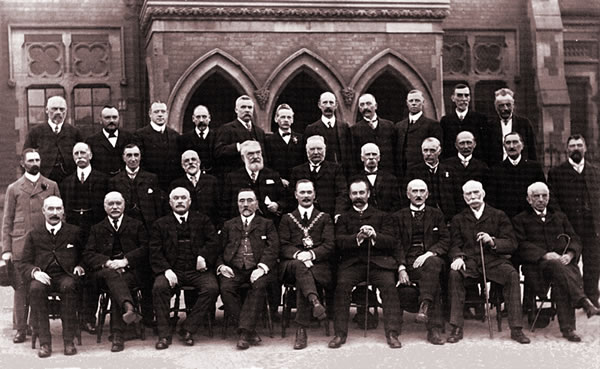 The 1910 Council taken outside the Town Hall with Mayor, Thomas Jenkins at the centre and Alderman Charles Tresise, the previous Mayor, on his left.
The 1910 Council taken outside the Town Hall with Mayor, Thomas Jenkins at the centre and Alderman Charles Tresise, the previous Mayor, on his left.
POST-1974 GOVERNMENT
The county borough was abolished when local government was re-organized nationally in 1974. Burton was re-absorbed into Staffordshire county council, on which it was represented by four councillors, and became part of East Staffordshire district council, on which it was represented by 31 councillors out of a total of 60. The Burton councillors were ex officio charter trustees for the former county borough, and they elected a chairman who was styled town mayor. Their duties were mainly ceremonial. In 1979 the district council was reduced to 46 members, of whom 23 represented the area of the former county borough divided into 11 newly-constituted wards: the former Burton ward acquired the Wetmore area, a new ward called Eton was created out of the east side of Horninglow ward, and two new wards, Edgehill and Waterside, were created out of the southern part of Stapenhill ward. In 1992 the district acquired borough status and was renamed East Staffordshire borough council, with its chairman styled a mayor, and the Burton charter trustees ceased to function.
A wooden board with the names of the town mayors between 1974 and 1992 hangs in the town hall near the mayor’s parlour.
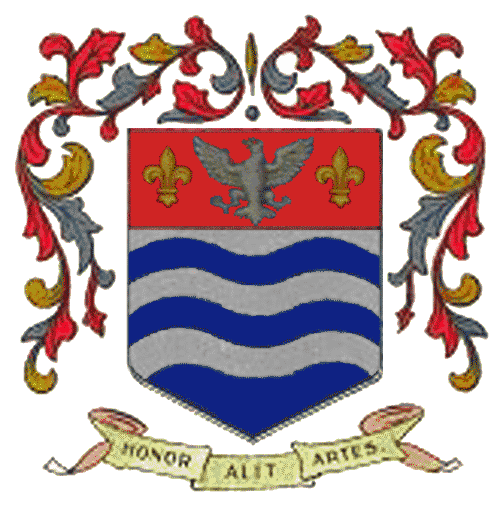
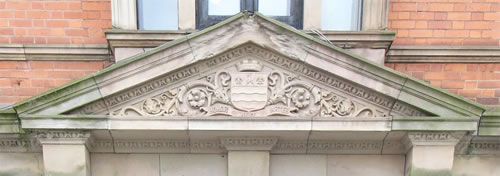
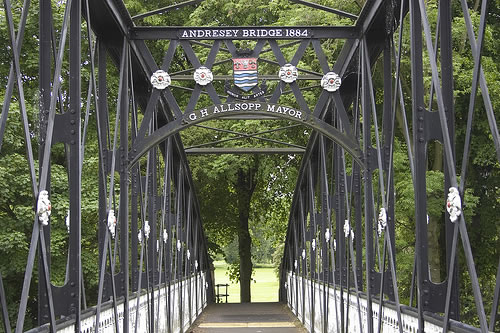
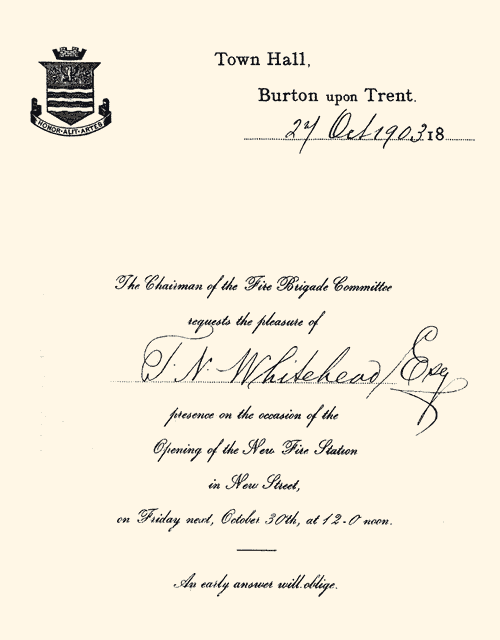

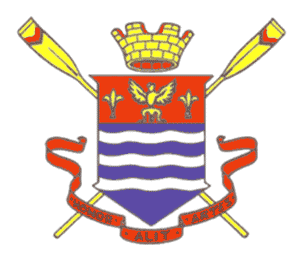
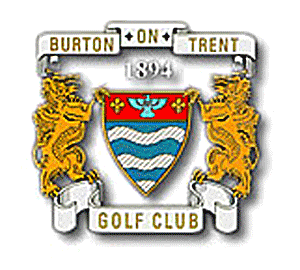
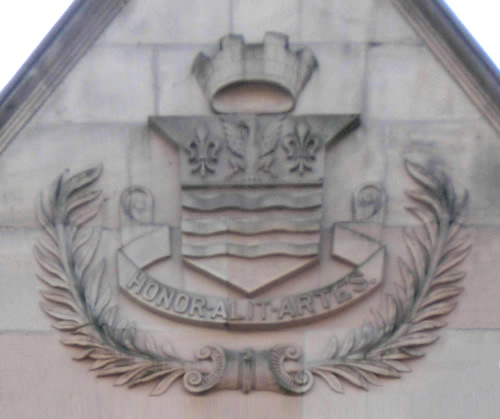
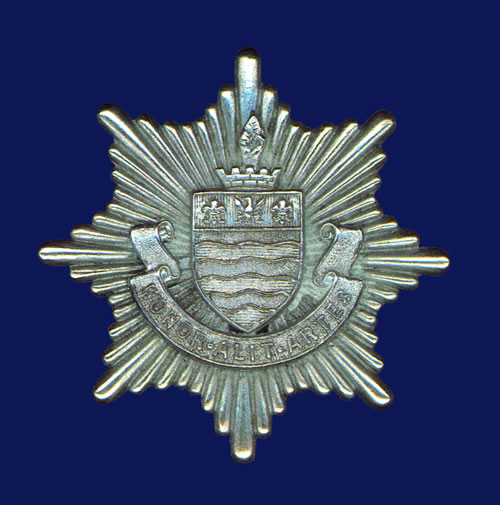
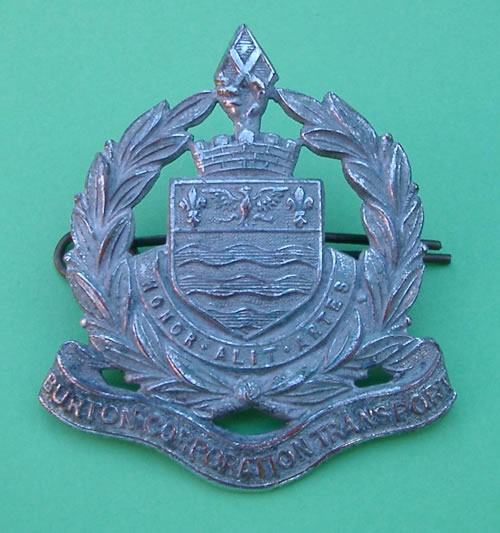
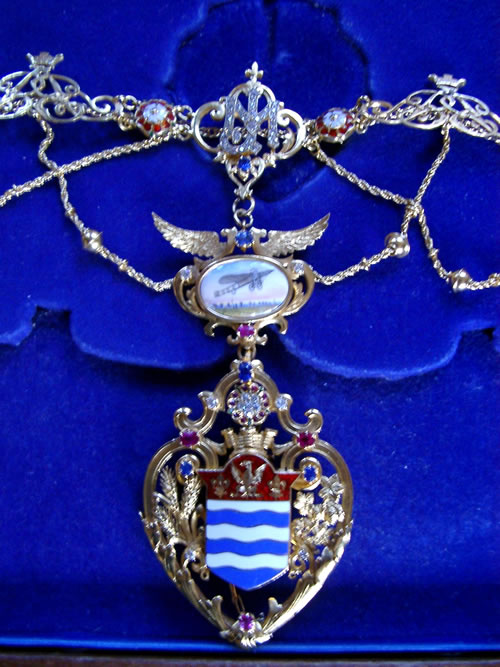
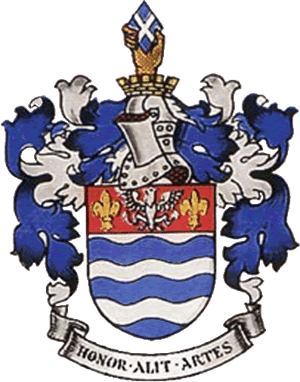
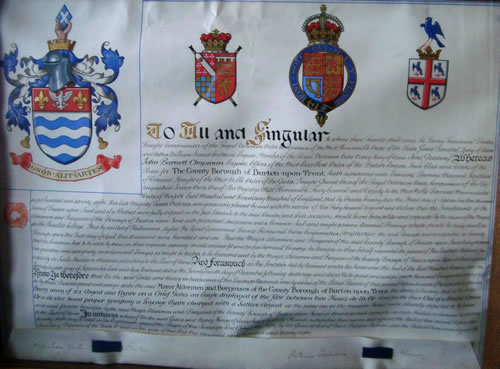
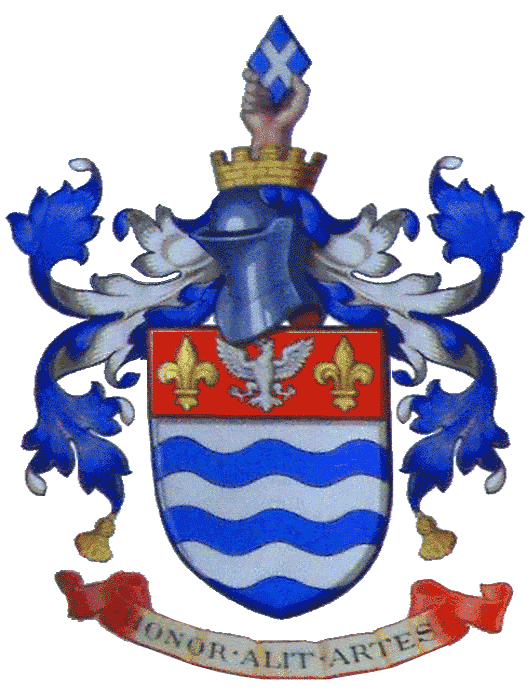
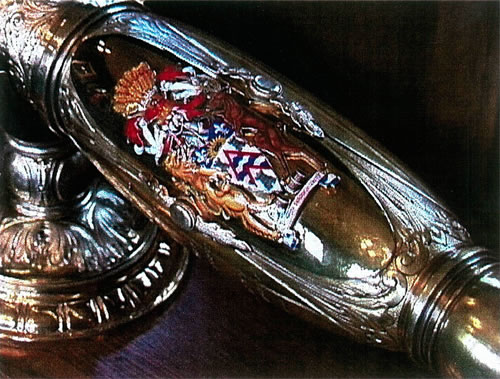
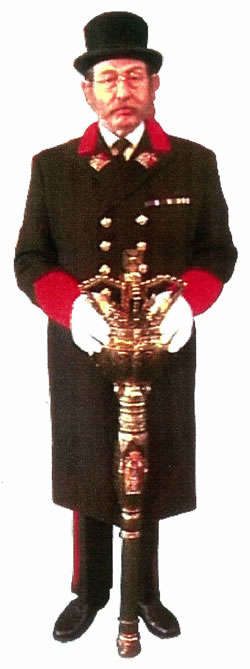
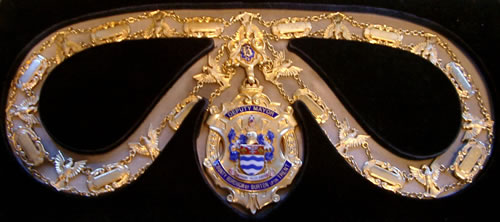


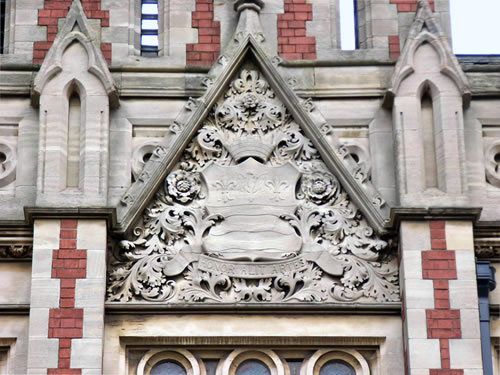
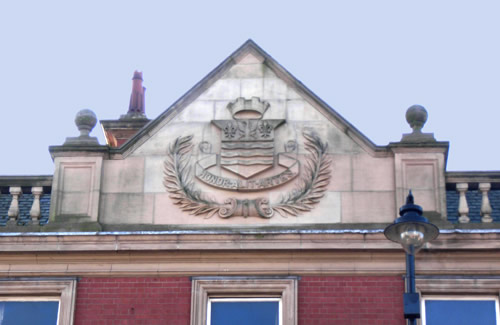
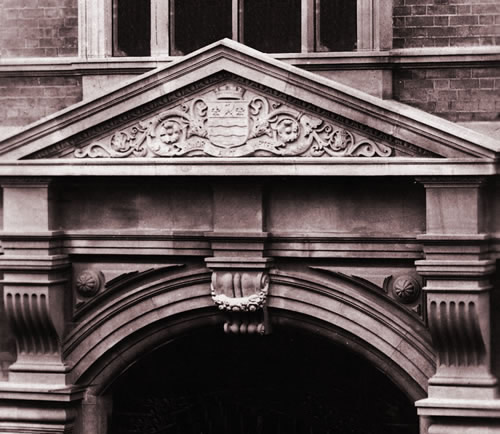
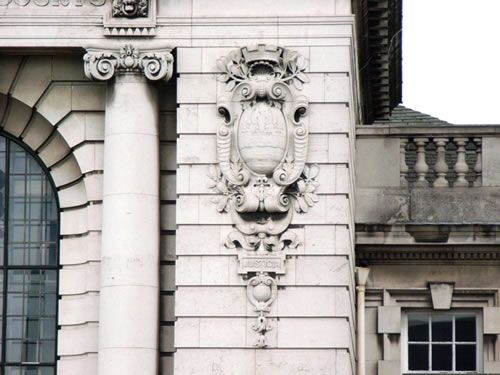
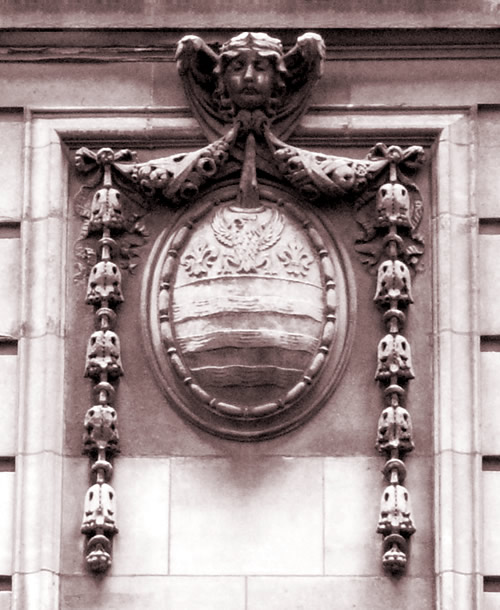

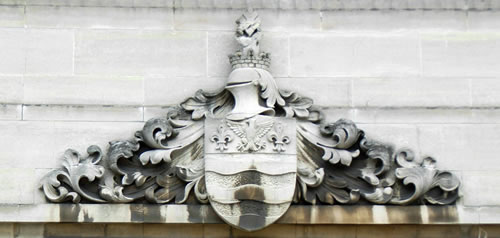
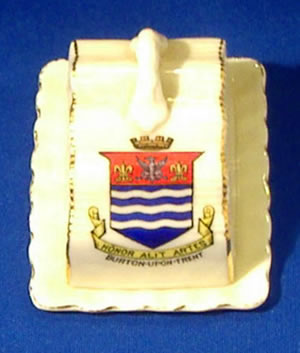
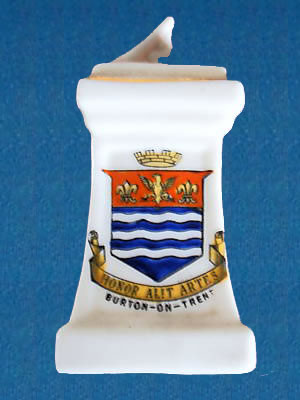
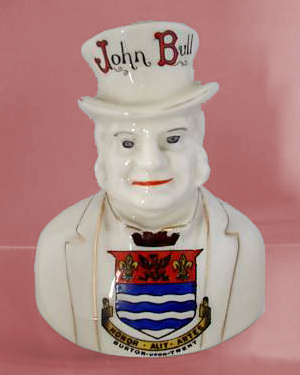

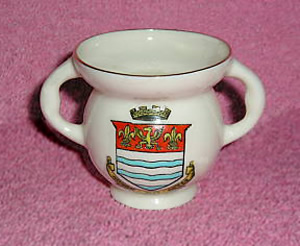

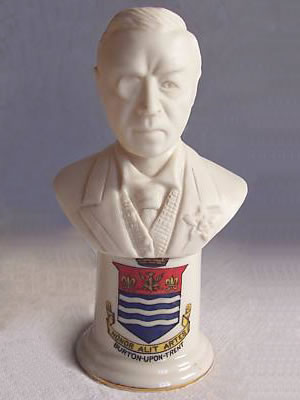
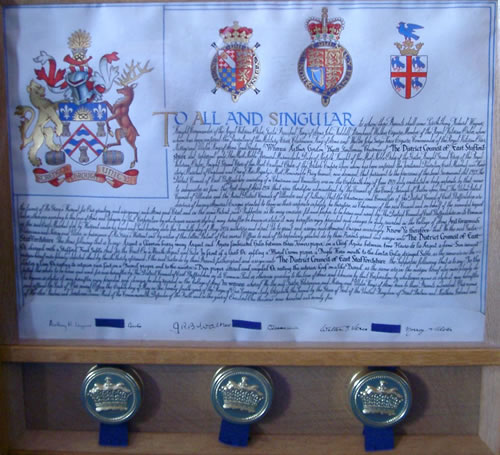
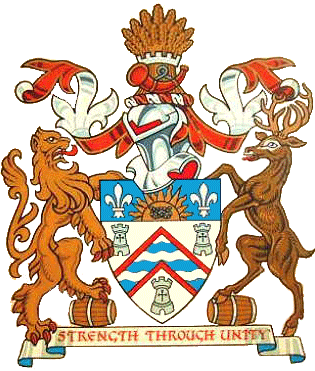
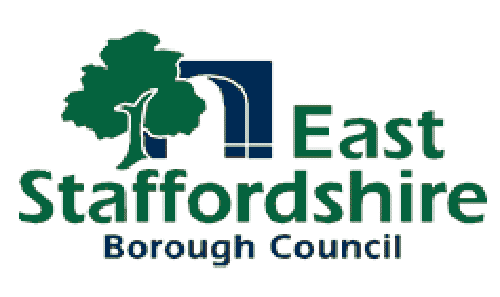
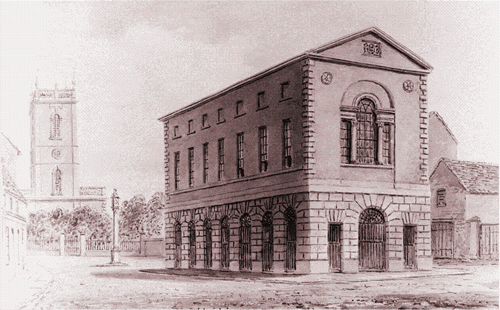
 The 1910 Council taken outside the Town Hall with Mayor, Thomas Jenkins at the centre and Alderman Charles Tresise, the previous Mayor, on his left.
The 1910 Council taken outside the Town Hall with Mayor, Thomas Jenkins at the centre and Alderman Charles Tresise, the previous Mayor, on his left.